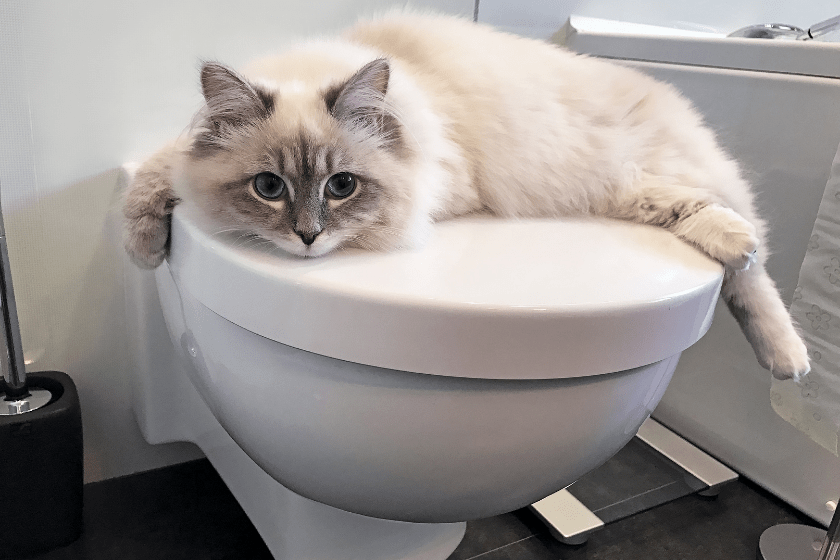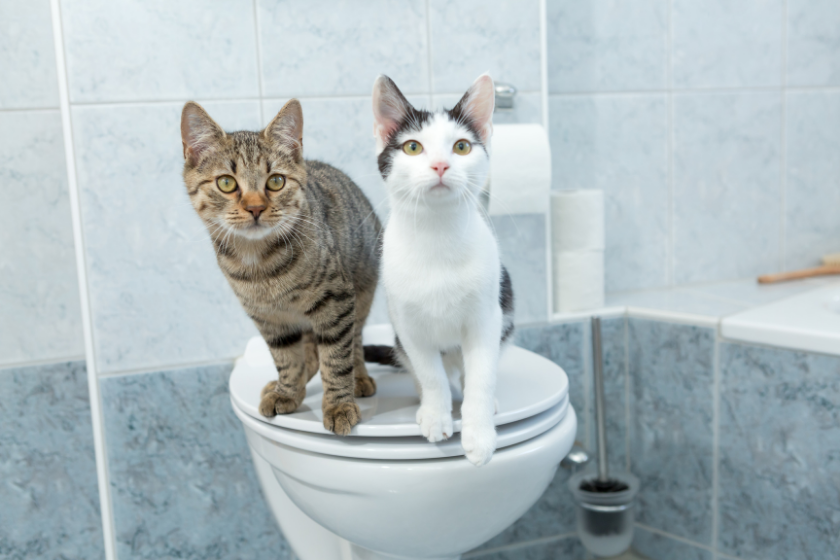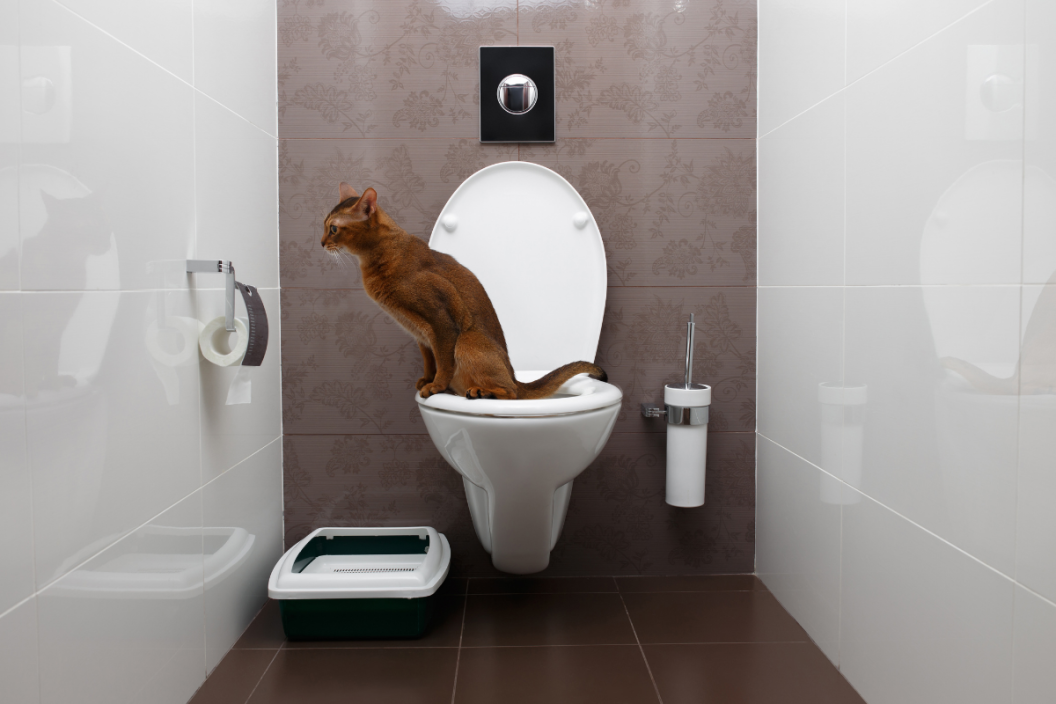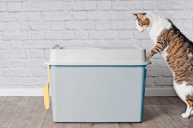Tired of the litter box? Try the toilet instead.
If you hate cleaning the litter box every day, you might be able to teach your cat to go in the toilet. Cat toilet training is a great way to keep your house cleaner, and many cats take to it quite well. When you potty train your cat, you can save on kitty litter and on litter pan cleaning time. Litter box furniture can help hide kitty's business, but sometimes you don't want to mess with the litter box at all.
Keep in mind that toilet training cats will take time and work.
There are various toilet training kits that you can buy, and these are important to use in this process. Potty training is a step-by-step process, so be patient and be willing to work with your cats over weeks or months.
Is Toilet Training Cats Right for You?

But before you jump into toilet training, you need to determine whether it's the right choice for your cat. If your cat is less than six months old, or already has problems using the litter box, toilet training probably isn't a good choice.
It's also not a good option if your cat is very skittish, because skittish cats feel more comfortable burying their waste to protect themselves. Finally, if your cat has any joint or mobility problems, you shouldn't use toilet training because there is a risk of injury. Older cats who have arthritis or mobility issues aren't good candidates for toilet training.
But if you have a healthy, outgoing, full-grown cat with no litter box issues like going outside of the box, toilet training might be a great option. Here's how to toilet train your cat in five easy steps.
How To Toilet Train Your Cat in 5 Steps

1. Place your cat's litter box next to the toilet.
Choose a toilet that is the most easily accessible to your cat. Put the litter box next to the toilet so your cat grows accustomed to the new setting.
2. Gradually raise the litter tray to toilet level.
Over the next few weeks, gradually raise the height of the litter box, using cardboard boxes, or stacks of newspapers or magazines. Your cat won't be used to the height of a human toilet, so this is a very important step in the training process.
It's important not to rush your cat through this process. If your cat becomes too uncomfortable with the height of the litter box, he might stop using it.
3. Place the litter box on top of the toilet seat.
If your cat successfully uses the litter box as your raise the height, place the litter box on top of the toilet. You might have to secure it with duct tape to ensure your cat doesn't knock it off.
This is the most cumbersome step because you might not be able to use this toilet yourself. But if it goes well, you should only need to leave the box there for three or four days.
4. Replace litter box with a training kit.
A Litter Kwitter, or similar product like CitiKitty, is a round litter tray that will fit on your toilet. This cat toilet training kit comes with multiple pieces, gradually increasing the size of the toilet bowl hole that is in the middle.
You can fill the tray with flushable litter, so the cat still knows this is where he is supposed to go, and gets comfortable with going on the toilet.
5. Remove the litter tray.
When you have gone through all the stages of the Litter Kwitter, and your cat is ready, remove the tray. If your cat does a good job with toilet training, he should just go in the toilet without any litter needed.
If your cat stops using the litter box at any point in the process, try taking a step backwards and having her get comfortable with that step before you proceed. Bear in mind though, that toilet training is not right for every cat.
Cats can be very stubborn; if this doesn't work, you might have to go back to the old-fashioned way. If you find yourself struggling, try these DIY solutions for a cleaner litter box instead.
Best of luck!
Have you toilet trained your cat? Tell us on the Wide Open Pets Facebook page!
This article was originally published January 31, 2020.
READ MORE: Self Cleaning Litter Boxes Take the Chore Out of Having an Indoor Cat




